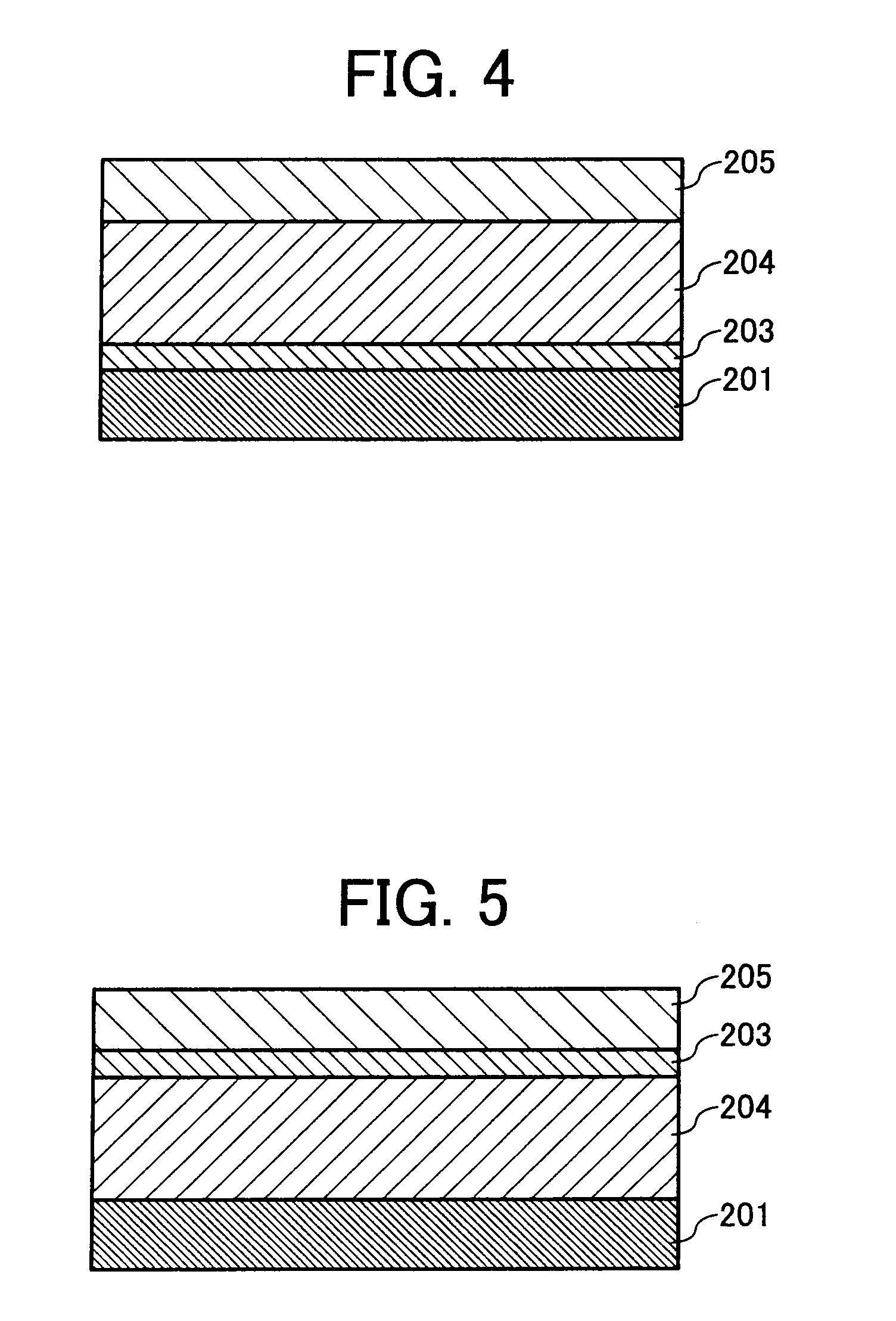Electrophotographic photoreceptor and method of preparing the photoreceptor, and image forming apparatus, image forming method and process cartridge using the photoreceptor
a photoreceptor and electrophotographic technology, applied in the direction of electrographic process, instrumentation, corona discharge, etc., can solve the problems of deterioration of density and quality of resultant images, easy absorption, background fouling, etc., and achieve the effect of increasing residual potential and without deterioration of image quality
- Summary
- Abstract
- Description
- Claims
- Application Information
AI Technical Summary
Benefits of technology
Problems solved by technology
Method used
Image
Examples
examples
[0314] Electric potentials of the following electrophotographic photoreceptors 1 to 109 were measured, and image qualities and levels of blurred images produced thereby were evaluated.
[0315] Each of the photoreceptors was installed in a process cartridge, and the process cartridge was installed in the full-color printer IPSiO CX8100 from Ricoh Company, Ltd., using a roller charger and an irradiator emitting a laser having a wavelength 660 nm such that the photoreceptor had dark space potential of 700 (−V) and an image illuminance of 0.45 μj / cm2. After 50,000 A4 600 dpi images having an image area of 5% were produced thereby, an irradiated part potential (VL) of the photoreceptor was measured by TREK 344, and a level of blurred images was evaluated.
Blurred Image
[0316] After each of the photoreceptors partially taped with TEFLON tape was left in a desiccator including an oxidizing gas of 50 ppm for 4 days, the photoreceptor was installed in the full-color printer IP...
examples 1 to 17
[0318] An undercoat coating liquid, a charge generation coating liquid and charge transport coating liquid, which have the following formulations, were coated in this order on an aluminum cylinder by a dip coating method and dried to prepare electrophotographic photoreceptors 1 to 34 having an undercoat layer of 3.5 μm thick, a CGL of 0.2 μm thick, a CTL of 23 μm thick.
Undercoat layer coating liquidTitanium dioxide powder400Melamine resin65Alkyd resin1202-butanone400
[0319]
CGL coating liquidFluorenone bisazo pigment12having the following formulaPolyvinyl butyral52-butanone200Cyclohexanone400
[0320]
CTL coating liquidPolycarbonate resin10(Z polyca from Teijin Chemicals Ltd.)The compound having an amine site in Table 1(No. and parts by weight are shown in Table 2)CTM having the following formula(10 parts by weight minus parts by weight of the compound havingan amine site)Tetrahydrofuran100
[0321]
TABLE 2P No.C No.EPACWACCF(I)VL(−V)DIDExample 111−0.285150.0751300.02Example 221−0.2851.890....
example 86
[0334] The procedure for preparation of electrophotographic photoreceptor 97 in Example 81 was repeated to prepare an electrophotographic photoreceptor 106 except for replacing the unsaturated polycarbonate polymer solution in the protection layer coating liquid with the following material:
Unsaturated polycarbonate polymer solution0.02having an acid value of 650 mg KOH / g fromFujisawa Pharmaceutical Co., Ltd.
PUM
| Property | Measurement | Unit |
|---|---|---|
| average primary particle diameter | aaaaa | aaaaa |
| volume resistance | aaaaa | aaaaa |
| thickness | aaaaa | aaaaa |
Abstract
Description
Claims
Application Information
 Login to View More
Login to View More - R&D
- Intellectual Property
- Life Sciences
- Materials
- Tech Scout
- Unparalleled Data Quality
- Higher Quality Content
- 60% Fewer Hallucinations
Browse by: Latest US Patents, China's latest patents, Technical Efficacy Thesaurus, Application Domain, Technology Topic, Popular Technical Reports.
© 2025 PatSnap. All rights reserved.Legal|Privacy policy|Modern Slavery Act Transparency Statement|Sitemap|About US| Contact US: help@patsnap.com



